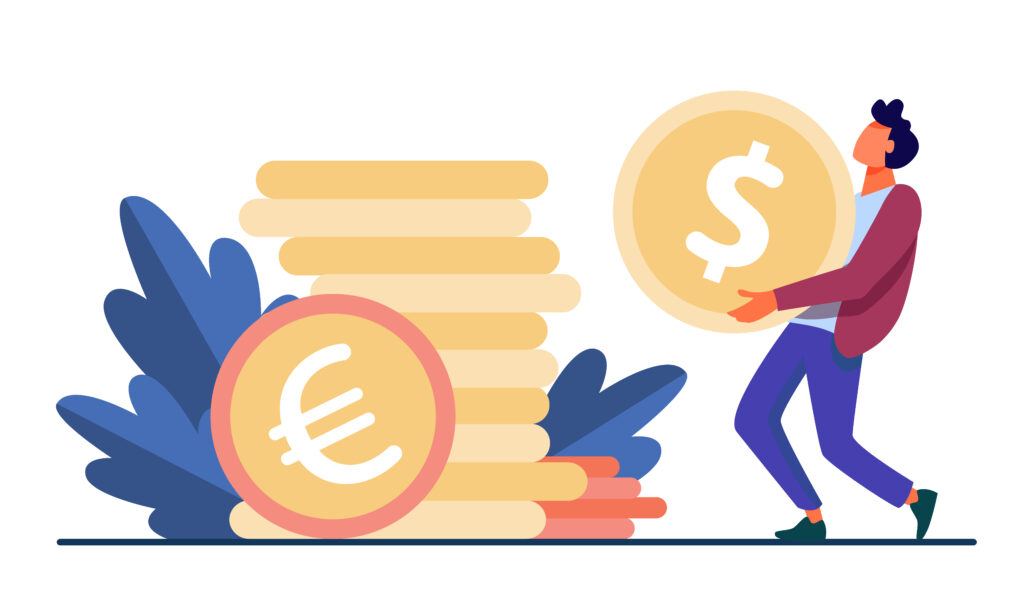Money Management in Forex Trading

Proper money management in Forex trading ensures you get the maximum trading profits. If you don’t care about your risk per trade, reward-to-risk ratios, don’t use stop-loss orders, or trade too aggressively, you won’t be able to trade profitably and grow your trading account.
In this article, we’ll try to introduce basic money management in Forex trading and how you can manage risk and money when trading

What is Money Management?
Money management in Forex trading is a key part of a forex trader’s overall risk management strategy. It involves consistently using one or more strategic techniques to make a currency trader’s risk capital yield the highest return for any losses that might be incurred in the process.
It’s a set of rules that help you maximize your profits, minimize your losses, and grow your trading account.
Rules of Money Management in Forex Trading
Money management techniques into your trading plan might take a bit of time and you need to check what works best for your trading strategy, account size and risk tolerance.
Know Your Risk Per Trade
The risk per trade is the amount of your trading account that you’re ready to risk on a single trade. It’s a key aspect that prevents you from blowing your account on a series of losing trades. Many money management techniques state that the upper limit of your risk per trade should be 2% of your trading account, or even less if you’re a beginner in the markets.
Always Use Stop Losses
A stop-loss order is the only guarantee that you won’t lose a substantial amount of money on a single trade. Always make sure that your stop-loss level represents a target based on actual price action and market conditions. This includes placing your stops around support and resistance levels, trendlines, channels, chart patterns, as well as considering the volatility of the pair to let the price enough room to breathe. Never place your stops based on the imaginary percentage or pip amounts.

Consider Reward-To-Risk Ratios of Trades
Before pulling the trigger on any trade, you really need to determine what reward you might get. Placing inappropriate take-profit levels can be as damaging to your trading results as placing inappropriate stop levels, as you won’t be able to maximize the profit potential of your trade setup.
Your take-profit level also determines the reward-to-risk ratio of your trade, which simply represents the amount of your risk relative to the potential profit of the trade. While R/R ratios of 1:1 mean that you’re risking the same amount as your potential gain, trades with R/R ratios of 2:1 or 3:1 have double or triple the amount of potential gain relative to the risk.
Choose a Suitable Position Size
Appropriate position sizing represents one of the most important components in the successful management of the funds deposited in a forex trading account. Position sizing is used by pro-traders to increase their profits in winning trades, and reduce their losses on losing trades.
Some traders prefer to determine their trade amounts as a percentage relative to the number of funds remaining in their trading account in order to conserve capital. Other traders might use the expected risk-reward ratio on trade to determine what size of a position they should take, with those trades for which they expect a greater reward for a given risk unit being taken in larger amounts. Still, other traders might trade in a fixed amount or number of lots. All of these position sizing strategies can be used effectively to manage your money when trading forex, so choose one and apply it consistently.
Don’t Trade Based on Emotions
Moving stop-losses once a trade is already open, exiting early from a profitable trade or simply using too much leverage to increase potential profits are usual mistakes that happen once traders let emotions manage their trades. If you do your analysis right, have confidence in your entry and exit levels and let the market determine if you were right or wrong.
Keep a Trading Journal and Learn Along the Way
Keeping a trading journal will help you to identify your weak spots in money management. Analyze your journal entries regularly and identify recurring patterns that lead you to lose money. Are your stop-losses too tight or take-profits too far away, reward-to-risk
k ratios inappropriate or risk per trades too large? This will help you fine-tune your money management techniques and become more successful in the future.
Money management in forex trading is perhaps the most important strategy traders need to understand when trading the forex market. If you still haven’t started managing your risk and money while trading, it may be about time you do so and see the impact they will have on your trading results.
ENHANCE YOUR FOREX TRADING
- If you’re new to forex trading, download our Forex for Beginners Trading guide.
- Learn to do your own TRADING ANALYSIS in a short period of time. Check out The Complete Guide To Forex Trading.
- If you want to get FREE Forex signals and make a profit consistently, join our free channel on Telegram here











